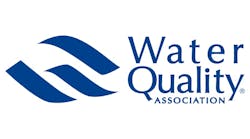Key Highlights
- The Lead and Copper Rule Improvements (LCRI) mandates a 10-year timeline for replacing lead service lines
- PFAS chemicals pose health risks; recent regulations set maximum contaminant levels, but legal challenges question their scientific basis and economic impact
- Aging water infrastructure remains a major concern, with increased costs and logistical challenges prompting federal funding initiatives
The quality of the nation’s drinking water has been a concern for decades. In 1974, Congress passed the Safe Drinking Water Act (amended in 1986 and 1996) to establish national health-based standards for drinking water to protect against naturally occurring and man-made contaminants that may be found in drinking water.
In addition, state and local initiatives to protect drinking water are popping up all over the country.
“The Water Quality Association continues to see an increased focus on water quality and treatment policies across the country,” explains Caroline Kenney, government affairs coordinator at the Water Quality Association (WQA). “So far this year, we have flagged 294 bills introduced at the state level on water quality and treatment solutions.
“With legislation relevant to the industry being introduced in 46 states, 23 state legislatures have introduced bills on PFAS regulations, 22 on water-related infrastructure, and 20 on lead reduction, making these three topics the top trends of the year.”
Getting the Lead Pipe Out
Lead in drinking water has ruled the headlines the last few years—including the tragedy in Flint, Mich., where water pipe leached lead into the drinking water, causing skin rashes, hair loss and children with increased lead in their blood. The water is also linked to an outbreak of Legionnaire’s disease that killed 12 people.
In 1991, the US Environmental Protection Agency (EPA) published the Lead and Copper Rule (LCR), a regulation to control lead and copper in drinking water. Since then, the LCR has undergone various revisions, the most recent of which is the Lead and Copper Rule Improvements (LCRI), finalized in October 2024. It establishes a 10-year deadline for municipalities to identify and replace their lead drinking water pipe. Lead sampling and remediation procedures to further limit lead exposure will also be changed.
The LCRI also requires communities to improve communication so residents are better informed about lead risk in drinking water, lead pipe location and replacement plans.
“There was significant uncertainty at the beginning of the [second] Trump administration regarding the position of the incoming EPA leadership on water quality regulations,” Kenney notes.
The LCRI and the establishment of a National Primary Drinking Water Regulation (NPDWR)—a set of legally enforceable standards and treatment techniques—for several PFAS chemicals were challenged in court by water utility organizations. “The incoming EPA Administrator Lee Zeldin and his team were then tasked with determining whether and how to defend the rulemakings in court or, conversely, how to rewrite or replace the rules with new versions,” she explains.
The American Water Works Association (AWWA), on behalf of its members, filed a petition for judicial review of the LCRI.
“We are proud of and encouraged by the tremendous progress water utilities are making to identify lead service lines, share that information with households, and overcome the legal and financial barriers to replacement,” says AWWA CEO David LaFrance. “However, the implementation of the LCRI, in its current form, is not feasible.”
AWWA’s concerns center around the control and access of water pipe on private property, the cost to households in increased water bills, and the feasibility of communities to finance such infrastructure improvements, as well as logistical and personnel challenges.
Zeldin, a former US congressman from New York, was a “vocal supporter of addressing PFAS contamination during his time in Congress, and members of his core team have been at the forefront of policy efforts to improve water quality protections,” Kenney adds. “Therefore, despite the broader mission of the Trump administration to cut regulations viewed as unnecessary or burdensome, a complete overhaul of these water quality regulations was not a strong likelihood.”
The Trump administration announced it will defend the LCRI in court and that the EPA would develop “new tools and information” to support implementation efforts. Specific details have not yet been released.
In July 2025, Congress reintroduced the Healthy H2O Bill (S. 2436/H.R. 4721), a key piece of bipartisan legislation supported by WQA. It establishes a grant program through the US Department of Agriculture to assist rural communities with testing and treatment for drinking water.
‘Forever Chemicals’ Need to Go
Another contaminant has made its way into our drinking water: per and polyfluoroalkyl substances (PFAS). These synthetic “forever chemicals” are used in many industrial and consumer product applications, including nonstick cookware and firefighting foams.
“The presence of PFAS compounds in source water and drinking water is of increasing public concern due to their widespread use and environmental persistence,” AWWA notes.
PFAS break down very slowly and can build up in people, animals and the environment over time, the EPA explains. Peer-reviewed scientific studies have shown that exposure to certain levels of PFAS may lead to decreased fertility, developmental effects or delays in children, increased risk of some cancers, the immune system’s reduced ability to fight infection, interference with the body’s natural hormones, and increased cholesterol levels or risk of obesity.
The NPDWR (see above) was established to address this issue.
WQA’s Kenney explains: “The initial spring 2024 rulemaking established the NPDWR, including a maximum contaminant level of four parts per trillion, for six PFAS contaminants. For two of these contaminants—perfluorooctanoic acid and perfluorooctane sulfonic acid—the core components of the regulation will be maintained, while a new rulemaking will be developed to provide two additional years for utilities to comply with the regulations and to establish a federal exemption framework.”
AWWA and the Association of Metropolitan Water Agencies filed a petition for judicial review in June 2025 of the EPA’s Final PFAS Drinking Water Rule. Their concern stems from the belief that the “EPA did not rely on the best available science and the most recent occurrence data and used novel approaches as the basis for portions of the rule. The petitioners believe the rule underestimates nationwide costs and adds to affordability challenges without achieving the public health outcomes we all seek.”
The EPA has stated its intent to withdraw and reconsider regulations for the remaining four contaminants covered in the NPDWR: PFHxS, PFNA, HFPO-DA (Hexafluoropropylene Oxide Dimer Acid, one of the so-called “GenX” chemicals) and the Hazard Index mixture.
Aging, Outdated Systems
In its 2025 State of the Water Industry report, AWWA LaFrance notes that “the cost of providing water service is rising, as the compounding needs to replace aging pipe collides with investments required to meet new regulatory requirements.”
Aging infrastructure was ranked as the second most pressing concern, followed by emerging contaminants (PFAS), workforce challenges, cybersecurity and public trust.
In May 2025, “Administrator Zeldin announced that the EPA would adjust the rulemaking establishing the PFAS NPDWR, but would still maintain key components,” Kenney says. “He also announced that EPA will initiate enhanced outreach to water systems through a new PFAS OUTreach Initiative, with a particular emphasis on reaching small and rural communities.”
Disadvantaged communities can access federal funding through the Water Technical Assistance program. The Infrastructure Investment and Jobs Act provided $11.7 billion to the Clean Water State Revolving Fund, a federal-state partnership providing communities with low-cost financing for various water quality infrastructure projects. It also provided $1 billion to handle emerging contaminants (such as PFAS).
For further information, visit www.epa.gov/water-infrastructure.
“As the water treatment industry continues to develop innovative, cost-effective and readily deployable solutions for the final barrier of protection from water contaminants, ongoing collaboration with EPA and other federal, state and local government stakeholders will be critical in helping communities comply with regulations and provide safe water to their residents,” Kenney says.
About the Author

Kelly L. Faloon
Freelance Writer/Editor
Kelly L. Faloon is a contributing editor and writer to Contractor, Contracting Business magazine and HPAC Engineering and principal of Faloon Editorial Services. The former editor of Plumbing & Mechanical magazine, Faloon has more than 26 years of experience in the plumbing and heating industry and more than 35 years in B2B publishing. She started a freelance writing and editing business in 2017, where she has a varied clientele.
Faloon spent 3 1/2 years at Supply House Times before joining the Plumbing & Mechanical staff in 2001. Previously, she spent nearly 10 years at CCH/Wolters Kluwer, a publishing firm specializing in business and tax law, where she wore many hats — proofreader, writer/editor for a daily tax publication, and Internal Revenue Code editor.
A native of Michigan’s northern Lower Peninsula, Faloon is a journalism graduate of Michigan State University. You can reach her at [email protected].



